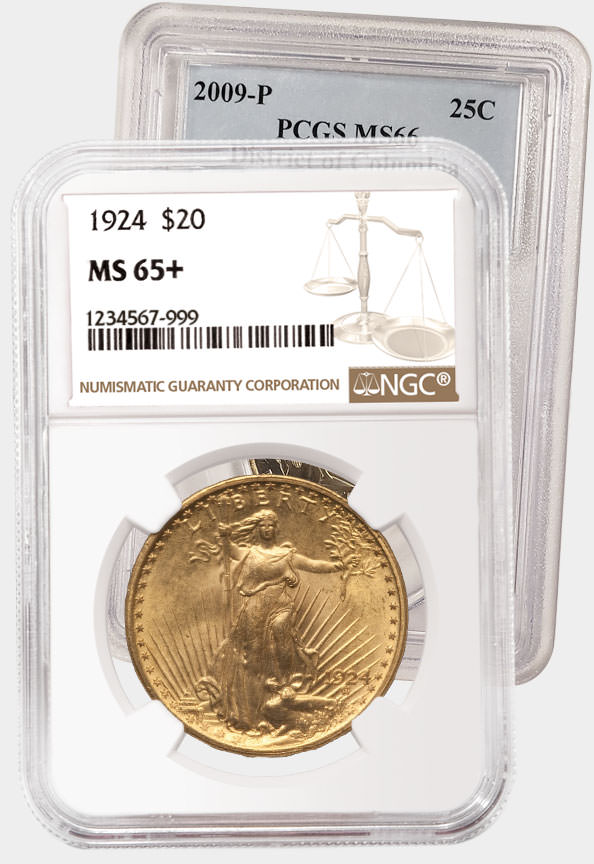What Are “Struck-throughs?”
Posted on 28/08/2017
The most common type of mint error may be a “struck through,” yet these are often misunderstood by collectors. Struck throughs occur when a piece of foreign material comes between the die and a planchet during striking. The coin is said to be “struck through” the foreign material, which leaves behind an impression on the coin’s surface.
Most struck throughs are extremely small, caused when tiny pieces of dust or other nearly microscopic particles are inadvertently struck into a coin. These minuscule struck throughs are commonly seen on mass produced modern silver bullion coins such as Uncirculated American Silver Eagles and Chinese Silver Pandas. Coins with these nearly imperceptible struck throughs can still get the top grade of 70 but generally cannot receive a Mint Error notation from NGC.
 |
 |
| This 2016 Mexico Silver ¼ Onza is graded NGC MS 70 and has a tiny strike through (circled in red). Click images to enlarge. |
|
This 2014 Vatican City 5 Euros graded NGC PF 70 Ultra Cameo has a few extremely minor strike throughs on the obverse (circled in red).
 |
 |
| 2014 Vatican City 5 Euros graded NGC PF 70 Ultra Cameo. Click images to enlarge. |
|
Struck throughs can occasionally be quite large, however, and collectors will often pay a premium for these prominent mint errors. While large struck throughs can be attributed as “Mint Errors” by NGC, they are not eligible for the MS 70 grade.
 |
 |
| 1982 Singapore 50C with massive obverse strike through. Click images to enlarge. |
|
The coin above is an example of a very large strike through. It appears that a piece of string came between the obverse die and the planchet. There are even impressions from the small fibers in the string. NGC does not lower points for the struck through mint error and therefore assigned a grade of MS 64 along with a Struck Through Mint Error notation.
There are some struck through mint errors that are so severe, however, that the coin cannot be numerically graded. For example, a coin struck through grease may have most of its design elements obscured. These pieces will be described as best as possible and labeled “MINT ERROR” on the NGC label.
 |
 |
| (1999) Virginia Statehood Quarter Struck Through Grease. Click images to enlarge. |
|
The above 1999 Virginia Statehood Quarter was struck with dies that were covered in grease. This obstruction prevented the dies from imparting much of the detail on the coin. Due to this, the coin will not receive a numerical grade, but it will still receive the MINT ERROR designation and be encapsulated with a standard NGC label (not an NGC Details label).
As you can see from the examples above, struck through errors come in a variety of types and sizes. Usually, these errors are small and don’t command much of a premium. However, when they are large or more obvious, they can often greatly enhance the desirability and value of a coin.
For more information about these extremely prominent struck throughs and other mint errors that cannot receive a numeric grade, check out this article.
Stay Informed
Want news like this delivered to your inbox once a month? Subscribe to the free NGC eNewsletter today!
Add Coin
Join NGC for free to add coins, track your collection and participate in the NGC Registry. Learn more >
